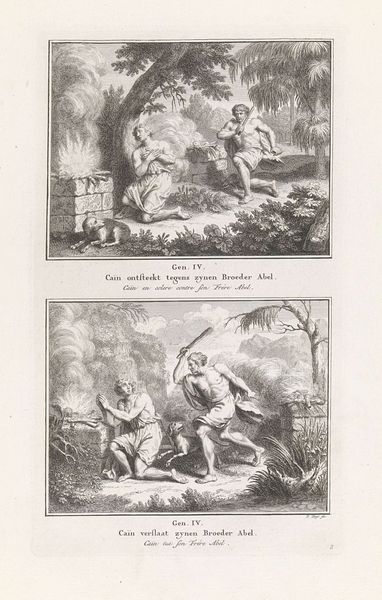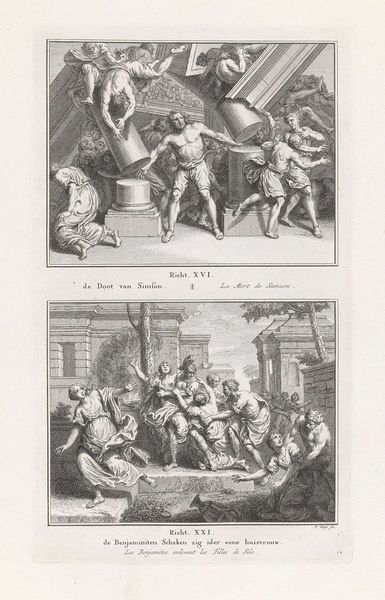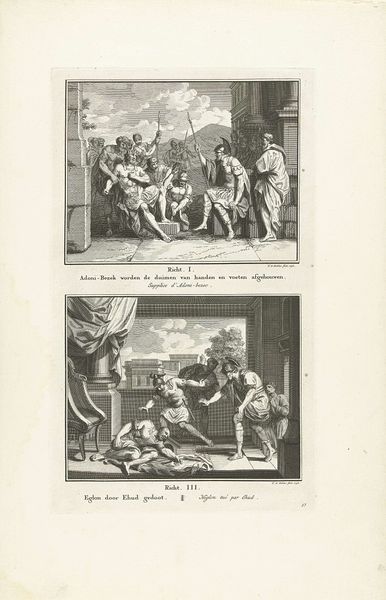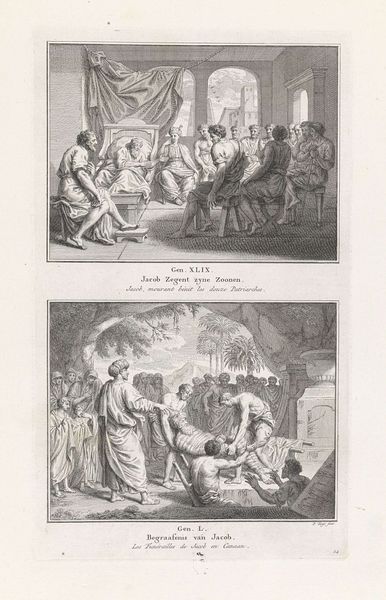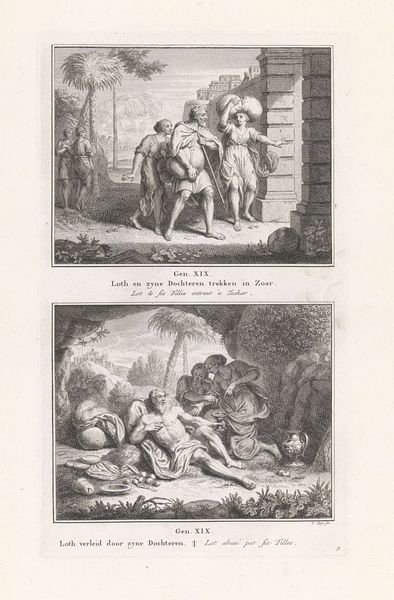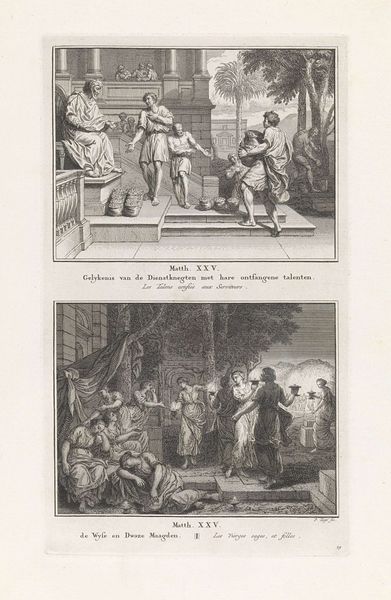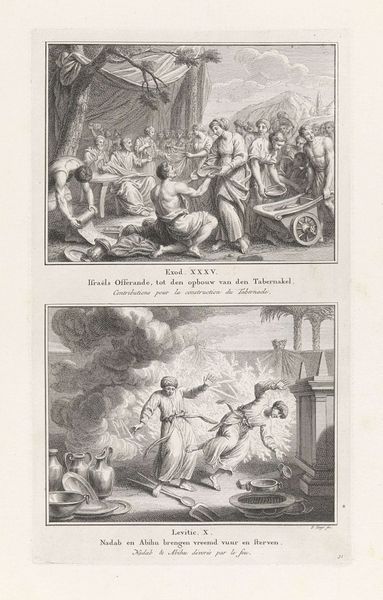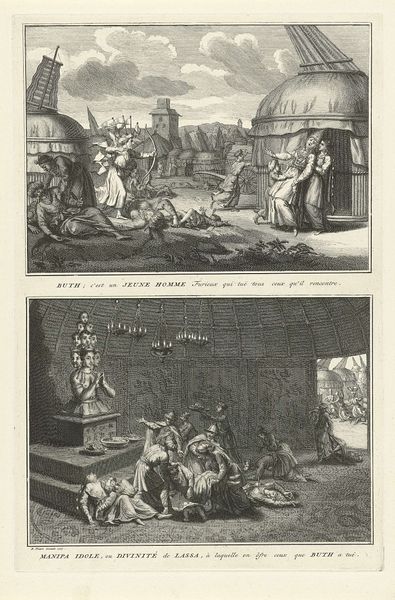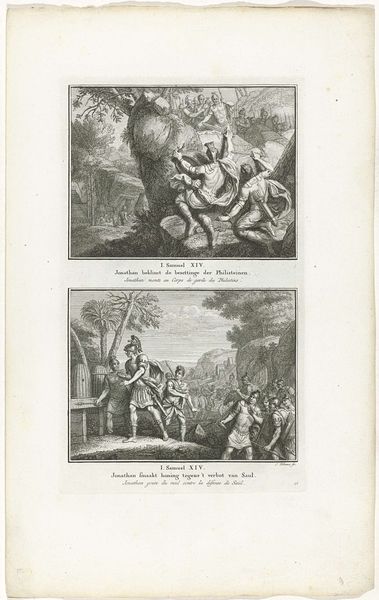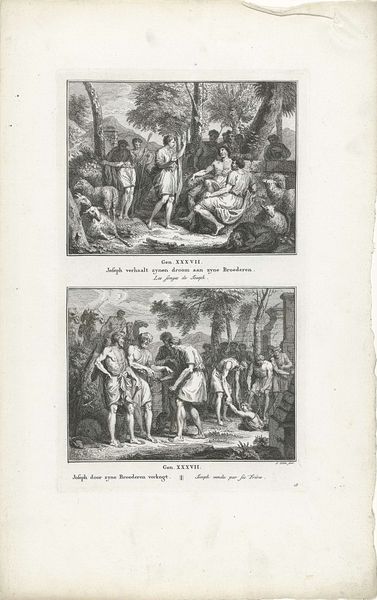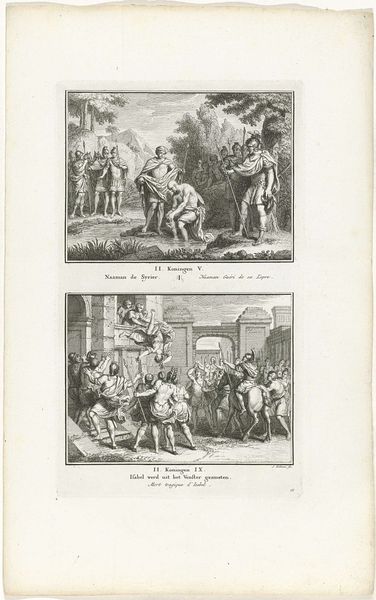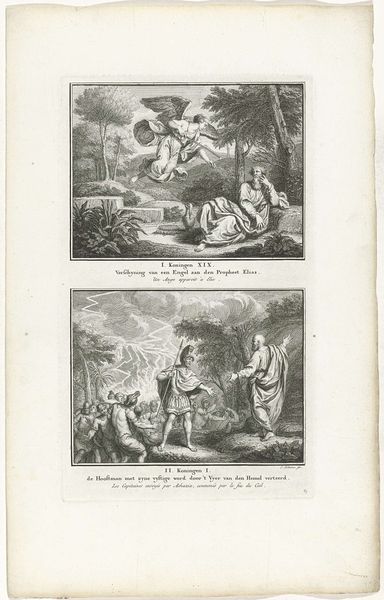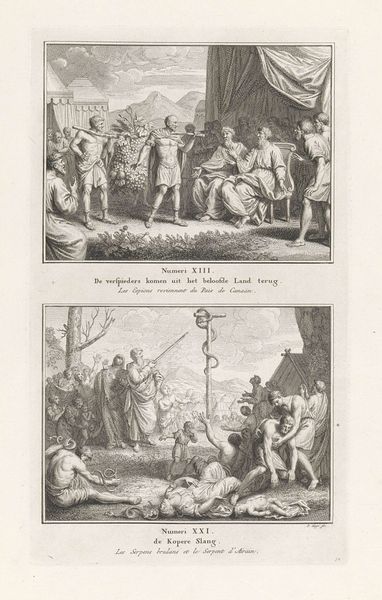
Simson verslaat de Filistijnen met een ezelskaak / Simson draagt de poorten van Gaza 1716 - 1791
0:00
0:00
engraving
#
narrative-art
#
baroque
#
old engraving style
#
figuration
#
recolouration
#
journal
#
history-painting
#
engraving
#
columned text
Dimensions: height 326 mm, width 194 mm
Copyright: Rijks Museum: Open Domain
Editor: This is a combined engraving by Pieter Tanjé, probably done sometime between 1716 and 1791. It depicts two scenes, "Simson verslaat de Filistijnen met een ezelskaak" and "Simson draagt de poorten van Gaza." It has a rather dramatic feel, wouldn't you say? What particularly stands out to you in these images? Curator: Dramatic is certainly one word for it! For me, it’s the sheer theatricality that captivates. Tanjé really leaned into the drama of these biblical scenes, didn’t he? You've got Samson looking positively operatic after laying waste to, like, a thousand Philistines with a donkey’s jawbone – a rather gruesome detail! – and then hauling the gates of Gaza uphill. It's as if he is saying, "Look what I did!" He’s really flexing those muscles, both literally and figuratively, in the landscape, creating a visual power statement. It seems as if Tanjé intended these almost to be Baroque superheroes. What does that say to you? Editor: Baroque superheroes – that's a great way to put it! I hadn't really considered the "hero" angle so strongly. He's so… theatrical, as you said. Almost too good to be true? Curator: Exactly! And I find that fascinating. Tanjé isn’t just illustrating a story; he's crafting a persona, really emphasizing the legend of Samson, inviting us to almost mythologize him. Plus, the very *act* of engraving, with its precise lines, lends an air of… credibility, perhaps? Though the events themselves are anything but, right? Editor: Definitely! I guess it's made me think differently about how artists in the past used visual cues to tell a story and how those stories still resonate, or at least fascinate, today. Curator: Agreed. For me it underscores how historical art wasn't always just about accuracy, but also about creating lasting impressions and shaping narratives. Something that has remained through the centuries.
Comments
No comments
Be the first to comment and join the conversation on the ultimate creative platform.
